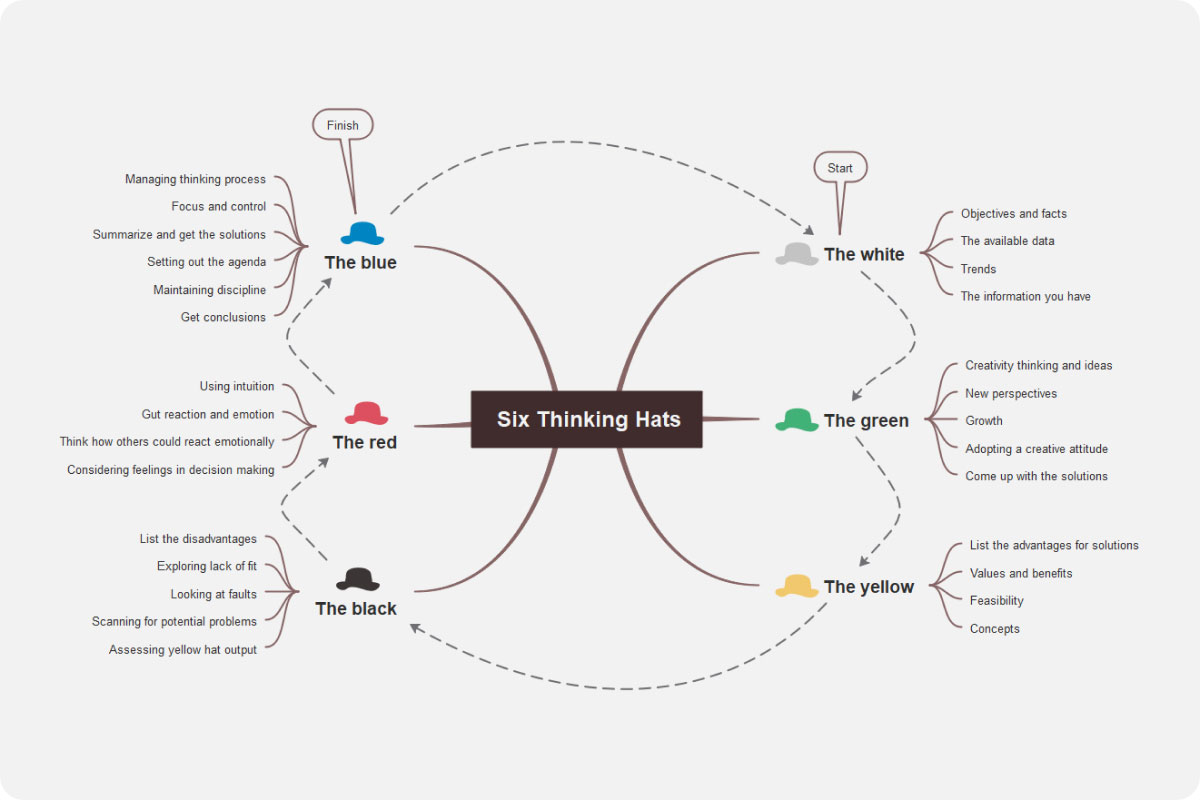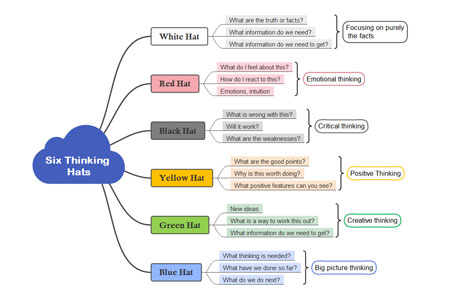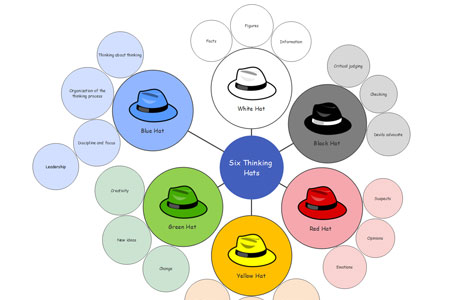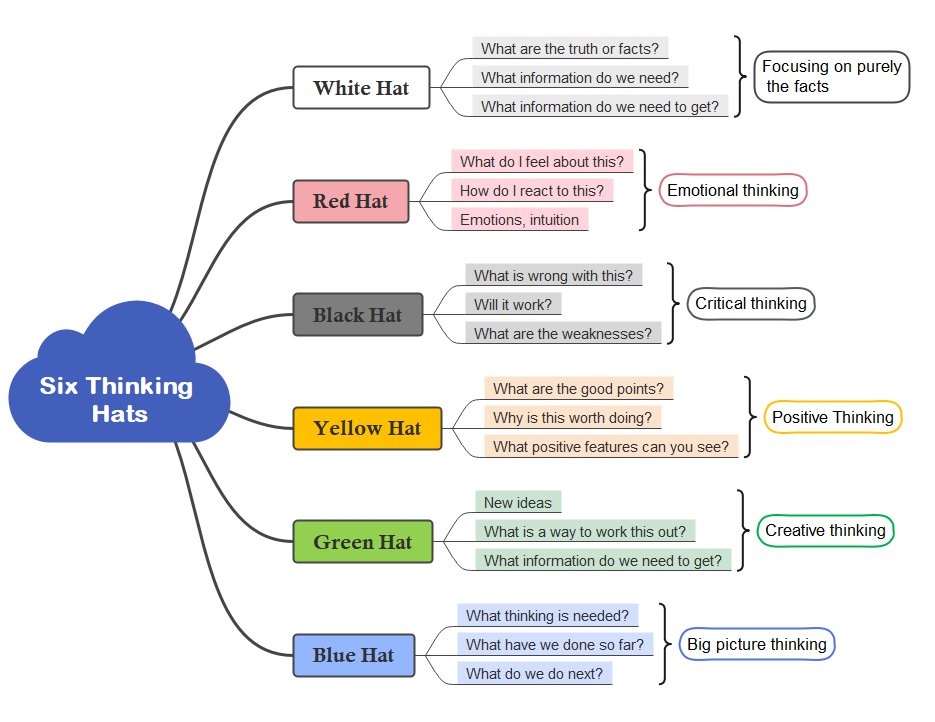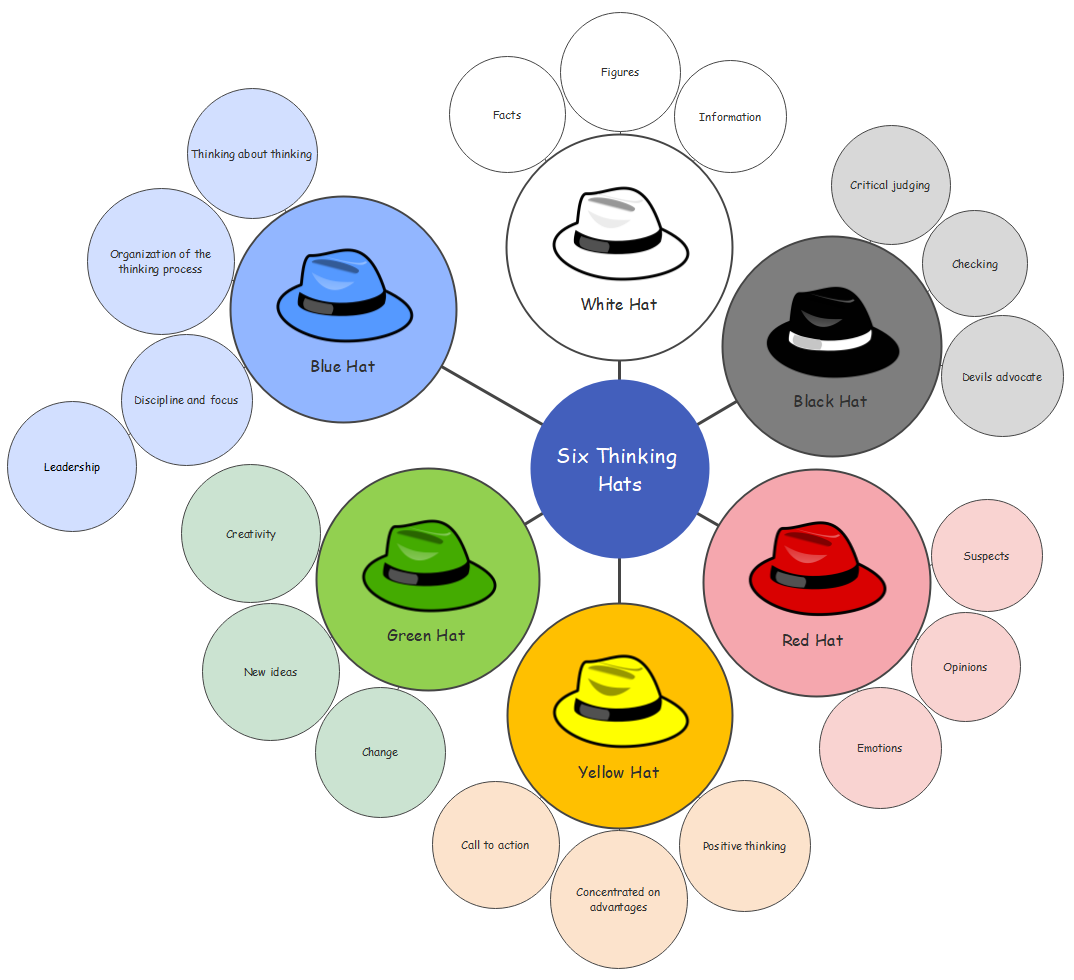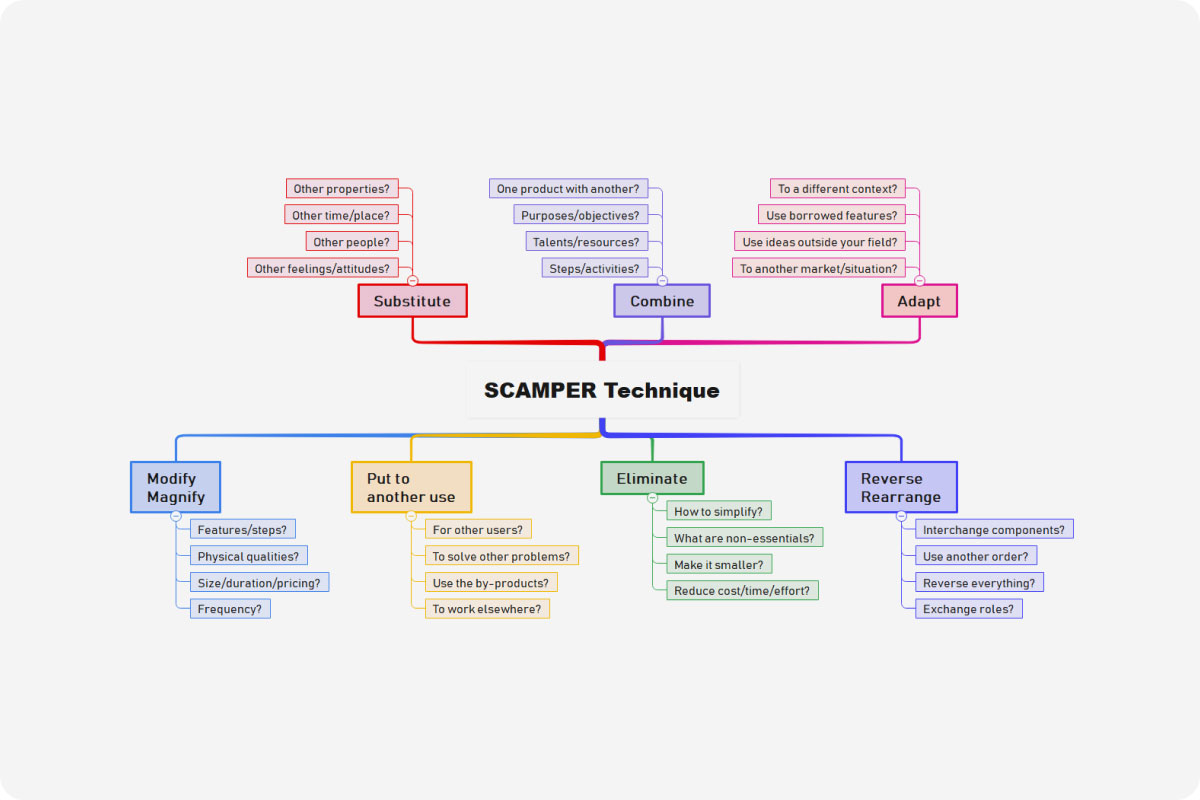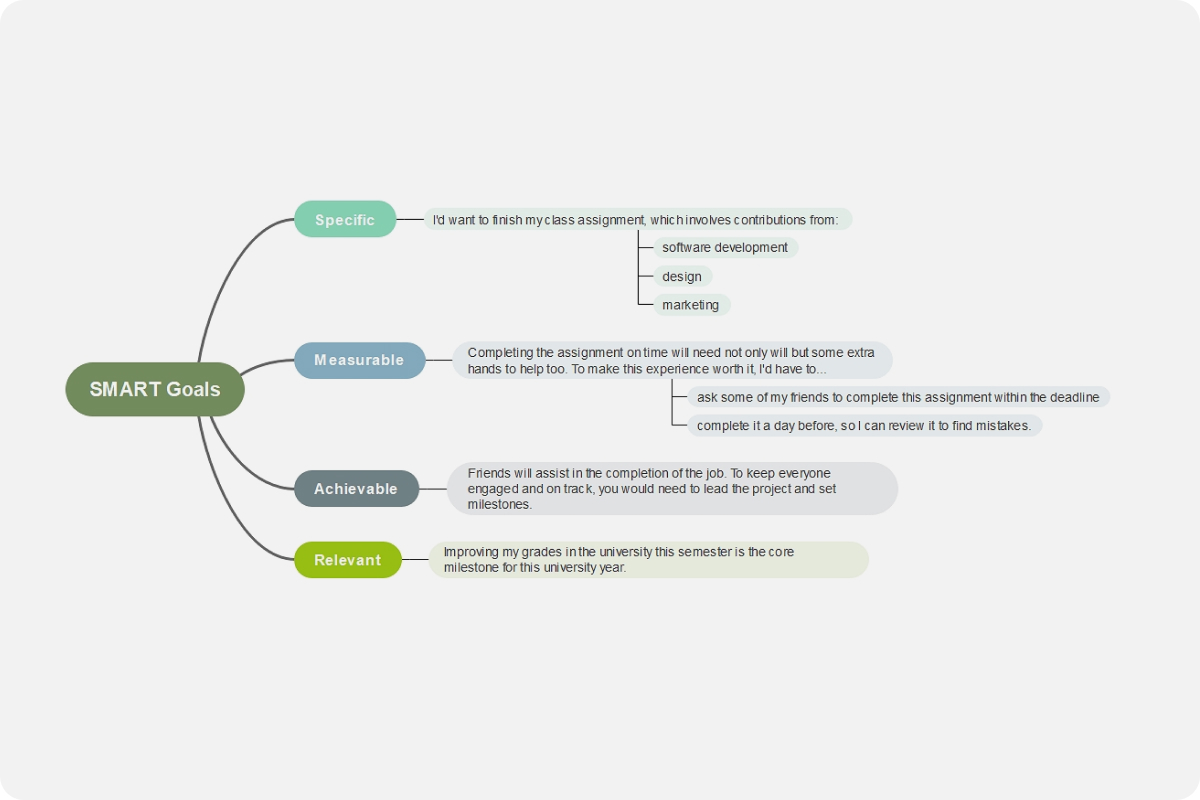About the Six Thinking Hats Template
What are the Six Thinking Hats?
Discouraged by endless debates and fruitless meetings? Edward de Bono, renowned Maltese mathematician, psychologist, and author, came up with an idea to eliminate these types of counter-active discussions. Rather than ending in a room filled with disgruntled team members, his technique promotes parallel thinking and encourages looking at a problem from different angles.
Six imaginary hats represent six different ways of looking at an issue and direct you “how to think” instead of just “what to think.” Taking on these different mindsets one at a time allows for greater collaborative thinking among team members and emphasizes out-of-the-box ideas.
The sequence of hats is up to you but deciding on an order beforehand is often an advantage (although you can be flexible). Not every hat must be used as it depends on what the focus of your meeting is.
The Blue Hat (Planning)
This is usually the person chairing the meeting or heading up a team. They set the ground rules. A session will most often start and end with this person. Questions that are likely to be asked while wearing this hat:
- “What is the problem?”
- “What are the benefits of solving this?”
The White Hat (Facts)
This is the person who collects data, sifts through information, and questions ideas that the others have given. It is important to avoid your own feelings in this role and look objectively at everything that is put forward.
- “What do we need to find out?”
- “What do we know about the issue?”
The Green Hat (Ideas)
Here innovation is stimulated! Don’t stick with one idea. Pursue every avenue. This is where out-the-box thinking is really promoted. It is important not to allow any negative comments or feedback in this part of the session as it will hamper the free flow of thought.
- “What are the possibilities?”
- “Are there alternatives?”
The Yellow Hat (Benefit)
Optimism is what the yellow hat is all about. All the best-case scenarios are brought up, the benefits, the opportunities. All the possible advantages brought up by the green hat are looked at. The type of question this person would ask:
- “What are the positives of that?”
The Red Hat (Emotion)
An intuitive approach. Feelings are discussed and expressed in this stage – fears and disapproval, as well as excitement. This is an open forum for gut feelings to be aired without any of them needing to be justified.
- “How does this make you feel?”
The Black Hat (Judgement)
This hat may seem negative, but it is necessary and very logical in its approach. A critical view is taken and looks at all the downsides of each idea and the worst possible outcomes. There should not be negativity without reason here.
- “What can go wrong?”
Why should you use our Six Thinking Hats template?
By following this method, you will find meeting times reduced. It is a simple approach that will make these times more productive and collaborative. It can empower a diverse group of people to cooperate with a single outlook in mind.
By using the 6 thinking hats template, it becomes even easier. In fact, by having this already-made framework before, you will focus the meeting even more as everyone will be able to see the intended agenda and progression. It is also a visual reminder for the participants of the different hats and their assigned roles.
Meetings can be done remotely, virtually, or in the same room by employing this user-friendly outline. In remote meetings, it is easy to send a link to all the participants and work on a shared board.
How to use our Six Thinking Hats template?
- Access the Six Thinking Hats template and make it available for all to see.
- Nominate the leader (Blue hat) who will chair the meeting. They can decide to add the whole team to the whiteboard template so each person can collaborate or can add descriptions for the sections themselves as the meeting progresses.
- Follow the sequence of the hats by filling in the different sections as each hat is dealt with. If you mix it up, remember that everyone must “wear” the same color at the same time to maintain focus.
- Ideas are added to the template as they are made.
- The leader can sum up at the end and allow for time for further discussion.
- Record or save your outcomes for future reference.
Six Thinking Hats Examples
This technique of lateral thinking can be used for many different scenarios:
Problem Solving – Customers at a pizzeria are complaining as the waiting time to get their pizzas has become longer. What can they do?
Opportunities – For an accounting company, there is a new expensive software program on the market that is quicker and better than their current one. Should they buy it?
Collaboration is a key aspect of positive meetings. Anything to minimize conflict between participants. One of the ways to achieve this without losing track is to adopt a method that involves parallel thinking – where the whole team is focused. Six thinking hats employ the different phases of thought and do away with frivolous arguments and emotions that can often derail meetings.
Solving problems or discussing opportunities can become an incredibly effective activity when adopting this constructive tactic. By using the 6 thinking hats template as a guideline, it makes this practice of thought processing so much simpler and easy to use for all those involved. Meetings can flow while everything is visually displayed, allowing everyone to follow the development.
